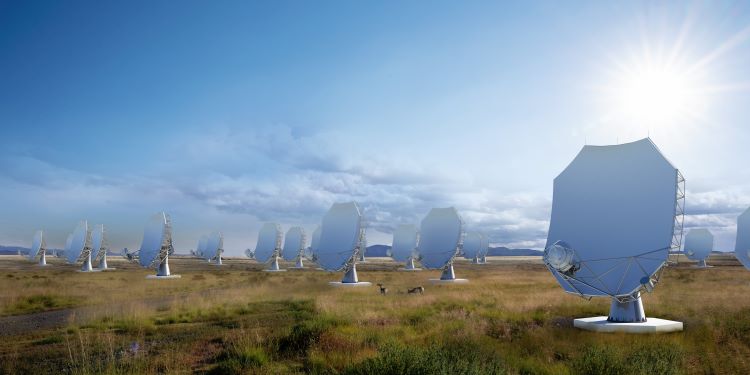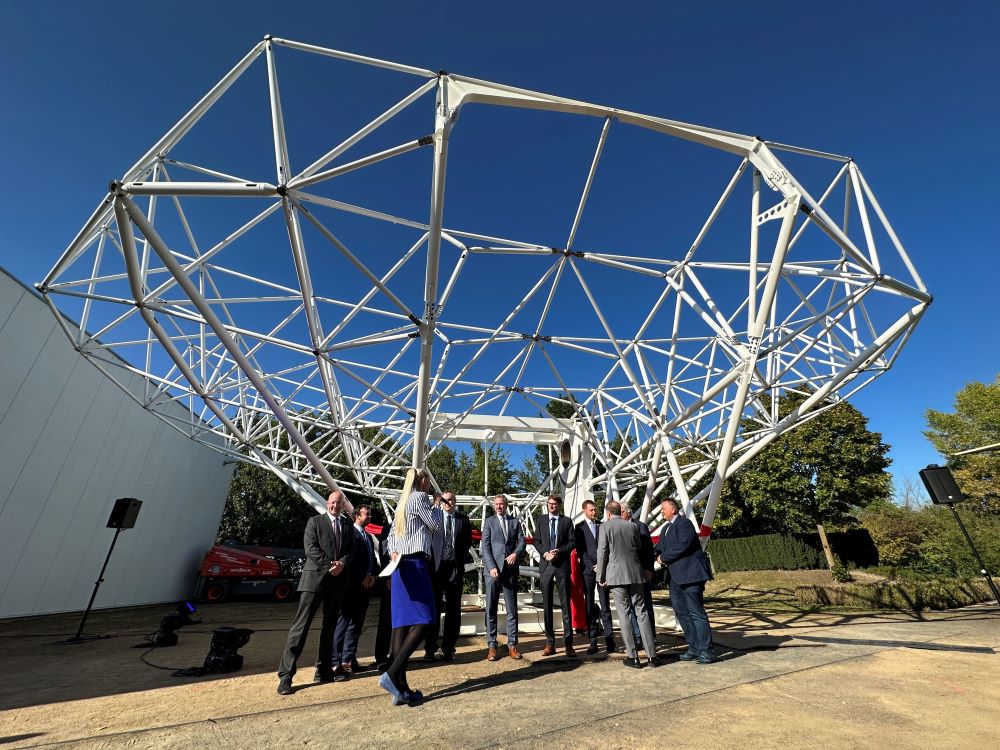The National Radio Astronomy Observatory (NRAO) recently disclosed a prototype radio telescope antennae for its next generation Very Large Array (ngVLA) to a group of press, scientists, engineers, and government and business leaders from the United States and Germany at the end of a workshop held at the Max Planck Institute for Mathematics in the Sciences in Leipzig. While construction on the ngVLA isn’t slated to begin until 2026, this recent unveiling provided an opportunity for mtex antenna technology to present its 18-meter dish, which consists of 76 individual aluminum panels arranged in an 8-sided shape.
“This design allows the surface of the dish to withstand whatever the environment throws at it—extreme temperature, wind, gravity—the reflector will maintain its precise shape within several microns, the equivalent of three human hairs,” said Lutz Stenvers, who is the CEO and President of mtex antenna technology. “The structure has 724 pieces, held together with 2,500 screws, weighing in at 43 tons. This design can be shipped in multiple containers to anywhere in the world and assembled in very little time.”
This unveiling comes after the Associated Universities, Inc. (AUI) was recently awarded a 3-year/$21 million grant from the National Science Foundation (NSF) to enhance the design of the ngVLA, along with receiving a $1 million grant from the New Mexico Local Economic Development Act (LEDA) being awarded to mtex to help with development of the company’s new Albuquerque facility.
Dr. Tony Beasley, NRAO Director, said regarding the $21 million grant, “Despite challenging economic times, this award demonstrates a strong commitment from the research community and the NSF to create astronomy’s next great instrument and continue U.S. radio astronomy leadership. NRAO is committed to begin construction of the ngVLA later this decade.”
While the prototype unveiling took place in Germany, the ngVLA will replace the current Janksy Very Large Array (VLA), which resides just outside Socorro, New Mexico. While the Jansky VLA consists of 28 antennae 25 meters in diameter, the ngVLA is currently planned to consist of 244 dishes each measuring 18 meters and capable of 10 times the sensitivity of the of both the Jansky VLA and the Atacama Large Millimeter Array (ALMA). As noted, construction on the ngVLA isn’t slated to start until 2026, with preliminary scientific observations slated to begin in 2029, followed by full scientific operations beginning in 2035.

Key science goals of the ngVLA will consist of gaining a better understanding of Earth-sized exoplanets, astrobiology and astrochemistry of exoplanetary systems, the formation and evolution of early galaxies starting from one billion years after the Big Bang to the present, galactic center pulsars, and supermassive black holes.
Featured prominently in the film Contact as being responsible for hearing the alien signal from the star Vega, the current Jansky VLA has a rich history for conducting groundbreaking radio astronomy ever since it was officially inaugurated in 1980. This includes studying ice on Mercury, supermassive black holes, microquasars, the center of the Milky Way Galaxy, Einstein Rings, gamma-ray bursts, supernovae, and an endless number of stars and planets throughout the universe.
What new and exciting discoveries will the ngVLA make about our universe in the coming years and decades? Only time will tell, and this is why we science!
As always, keep doing science & keep looking up!

